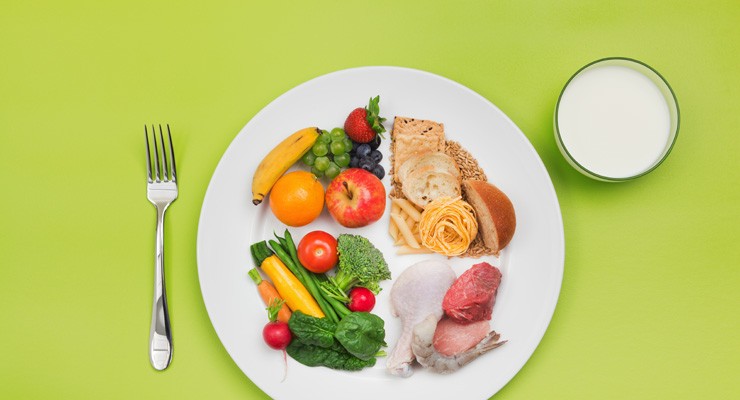Portion Control: What Does a Serving Size Look Like?
Understand the difference, so you can track how much you eat.

Healthy eating is all about balance — watching what you eat and how much. Get tips on eating the right amount of food for you, so you can reach your health goals.
What’s a portion?
A portion is how much of a food or drink you choose to consume at a certain time, whether it’s from a packaged food, at your dinner table or at a restaurant. Some people are surprised to find that their portions may be more than a single serving, which is a measured amount of food. For example, a hearty bowl of cereal might seem like a healthy choice, but it can easily contain two or more servings. A typical sandwich contains two servings of bread.
Over the past few decades, portion sizes have become larger. Some people call this, “portion distortion.” A bagel used to be about three inches across and contain about 140 calories. Today a standard bagel is about six inches across and is about 350 calories. That’s a difference of about 210 calories! A regular cheeseburger used to be 333 calories; today it is, on average, about 590 calories. A meal served at a restaurant can often be enough for two or three additional meals.
What’s a serving and how can it help?
On packaged foods, you can find a serving size on the Nutrition Facts label. The label also provides information about the amount of calories, as well as other nutrients that are contained in that packaged food.
The label tells you the percent Daily Value (DV), which is how much of a specific nutrient is in each serving as it relates to the recommended amount for a daily diet of 2,000 calories. The label is a guide to help people make informed decisions about the food they eat.*
Do you know your range of calories per day?
If you’re watching your calorie intake, it’s important to know how many calories are in the foods and drinks you consume. That way, you can track these amounts and use that information to help adjust your portion sizes.
Tools to help you learn about serving sizes
Estimate one serving by visualizing the size of everyday objects:
Food item: |
Looks like: |
1 cup of salad greens, 1 medium fruit |
A baseball |
3 ounces of meat or chicken |
Deck of playing cards |
½ cup of cooked rice, pasta, potato |
Half a baseball |
1.5-ounce serving of cheese |
Four stacked dice |
1 cup of cereal flakes |
A fist |
1/2 cup ice cream |
Half a baseball |
2 Tablespoons peanut butter |
Ping pong ball |
1 medium baked potato |
A fist |
1 teaspoon of margarine |
One die |
How can you control your portions?
When you start getting to know serving sizes, start comparing them to your portions. Then make changes necessary to help you stay on track. To help you regulate your portion sizes, these tips may help, too:
- Eat from a plate or bowl, not from a package
- Place your food on a smaller plate than you’re used to
- Consider sharing an entrée with a friend
* The FDA published changes to the new Nutrition Facts label in 2016. Manufacturers will be required to use these new labels by 2018.
By Kristin Nelson, Contributing Editor
Sources
U.S. Department of Agriculture. Dietary guidelines for Americans, 2015-2020. Accessed: December 13, 2016.
National Heart, Lung, and Blood Institute. Serving sizes and portions. Accessed: December 13 2016.
National Institute of Diabetes and Digestive and Kidney Diseases. Weight-control Information Network. Just enough for you. Food portions. Accessed: December 13, 2016.
Academy of Nutrition and Dietetics. Serving size vs. portion size: Is there a difference? Accessed: December 13, 2016.
Last Updated: December 15, 2016
